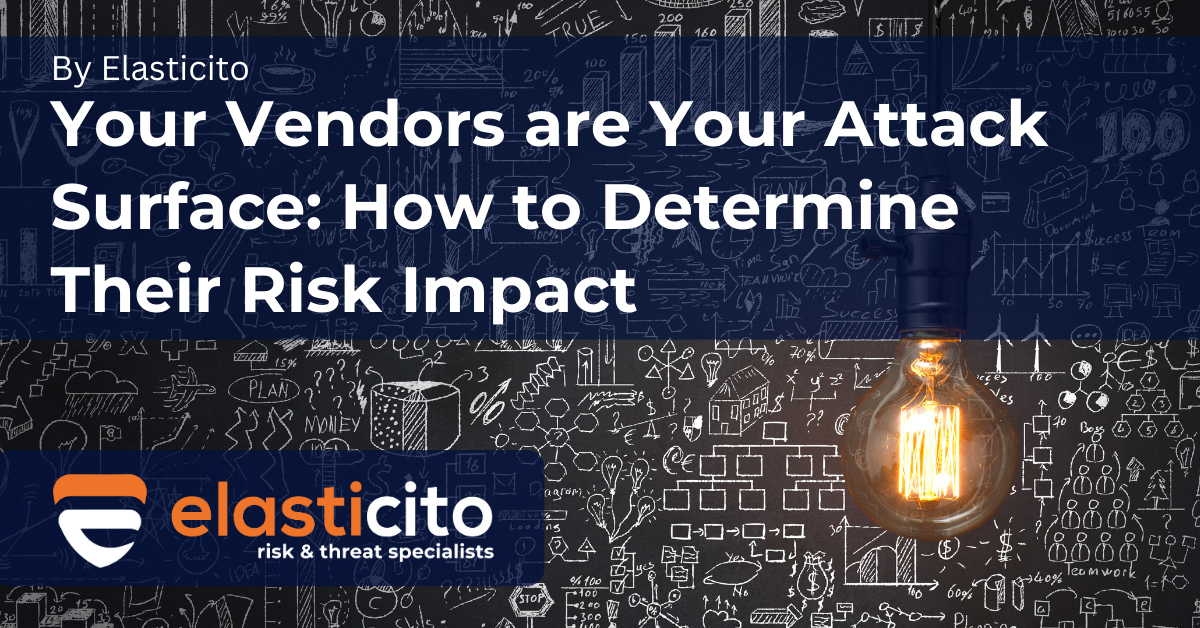Your Vendors are Your Attack Surface: How to Determine Their Risk Impact
The modern enterprise is a web of interconnected systems, and its security is only as strong as its weakest link. More often than not, that weakest link is a third-party vendor. Supply chain attacks, like the ones that have made headlines in recent years, have proven that a vendor’s security is a direct reflection of your own.
This isn’t just about data breaches. A vendor’s failure can trigger a domino effect, leading to operational disruptions, reputational damage, and severe financial and regulatory penalties. The challenge for today’s cybersecurity teams is to move beyond the traditional, static view of vendor risk and embrace a more dynamic, continuous, and intelligence-driven approach.

So, how do you determine the risk impact of a vendor in this hyper-connected world?
The Vendor Risk Assessment: A Dynamic Process, Not a One-Time Event
A Vendor Risk Assessment (VRA) is the process of evaluating the potential risks associated with a vendor’s operations and services. This isn’t a simple “checkbox” exercise performed once at onboarding. It’s a continuous, lifecycle-driven process with three core stages:
- Onboarding Due Diligence: This is the initial vetting process. It’s where you determine the inherent risk of a potential vendor—the risk that exists before any controls are applied.
- Continuous Monitoring: This is arguably the most critical stage. It’s the ongoing process of evaluating a vendor’s security posture in real-time.
- Offboarding: When a vendor relationship ends, a secure offboarding process is essential to ensure all access is revoked and sensitive data is handled appropriately.
Categorising Risk: Beyond the Basics
To truly understand a vendor’s risk impact, you must look beyond a single cybersecurity score. A comprehensive assessment will categorise risk across several dimensions:
- Cybersecurity Posture: This is the foundational element. It involves a deep dive into the vendor’s security policies, technical controls (like access management, patching, and data encryption), incident response plans, and vulnerability management.
- Operational Efficiency: How well can the vendor provide consistent, reliable services? This includes evaluating their service uptime, disaster recovery plans, and business continuity strategies. In 2025, where operational resilience is a regulatory mandate (e.g., DORA in Europe), this is non-negotiable.
- Regulatory Compliance: Does the vendor adhere to the same regulations you do, such as GDPR, HIPAA, or industry-specific frameworks like NIST or CISA? A vendor’s non-compliance can become your own regulatory liability, leading to hefty fines and legal action.
- Financial Stability: A financially unstable vendor is an operational risk. A sudden bankruptcy or a significant drop in financial health can disrupt your supply chain and business operations.
- Reputational Impact: A vendor’s public security incident or a history of poor ethical practices can directly damage your brand’s reputation and erode customer trust.
Modern Methods for a Modern Threat Landscape
The risk assessment process is no longer a purely manual one. We’ve moved past the tyranny of spreadsheets and static reports. The key to a robust and scalable VRM program is leveraging a combination of modern tools and methodologies:
- Qualitative & Quantitative Assessments: While qualitative assessments provide valuable context and expert judgment, quantitative assessments are essential for objective, data-driven decisions. This often involves a risk matrix that assigns a numerical value to the likelihood and severity of an event. A common model is the Likelihood x Impact formula. For example, a high-impact, high-likelihood event scores a much higher risk value, signaling a top priority for remediation.
- Vendor Risk Management (VRM) Software: This is the backbone of any modern VRM program. VRM software automates the tedious work of distributing and collecting questionnaires, analysing data, and continuously monitoring for red flags. These platforms provide a “single source of truth,” offering insightful dashboards and reporting that give executives and security teams real-time visibility into their third-party risk.
- Automated Security Ratings: Forget static questionnaires. In 2025, we use security ratings from companies like UpGuard, SecurityScorecard, or Bitsight to provide a data-driven, external view of a vendor’s security posture. These ratings are updated daily, providing a near real-time snapshot of a vendor’s evolving risk profile. They can also be used to validate a vendor’s self-reported questionnaire responses.
- AI and Predictive Analytics: The future of VRM is proactive, not reactive. AI and machine learning are now being used to analyse vast amounts of data—from dark web chatter to financial statements—to detect patterns and predict potential problems before they happen.
The Role of the Cybersecurity Professional
A cybersecurity professional is a strategic business advisor. It’s not enough to simply identify a risk. You must be able to communicate its impact to the business and work collaboratively with stakeholders to mitigate it. This involves:
- Tiering Vendors: Not all vendors are created equal. You must classify vendors by their criticality and the sensitivity of the data they handle. A payroll provider or cloud service is a high-risk vendor that requires rigorous assessment and continuous monitoring. A low-risk vendor, like an office supply company, may require a less intensive review.
- Establishing a Framework: Consistency is key. A standardised framework for all vendor assessments ensures a repeatable, auditable, and scalable process.
- Continuous Engagement: A strong vendor relationship is built on trust and communication. This involves not only setting clear expectations in contracts but also working with your vendors to help them improve their security posture.
In conclusion, determining the risk impact of a vendor in 2025 is a complex but essential task. It’s about shifting from a reactive mindset to a proactive one, leveraging technology to automate and streamline processes, and treating your vendors as an extension of your own digital ecosystem. Your organisation’s resilience, reputation, and long-term success depend on it. Ready to take control of your vendor risk and fortify your digital ecosystem? Contact Elasticito today for a comprehensive consultation on building a robust Vendor Risk Management program.
